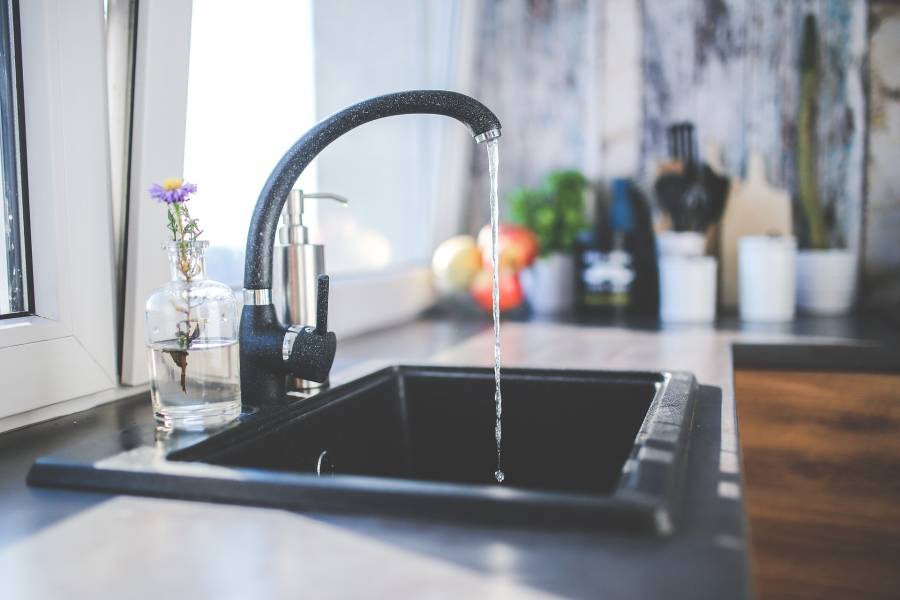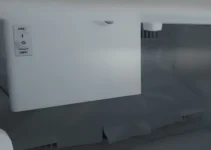Most homeowners will call a plumber to vent a kitchen sink under their window. They think it’s hard. And yet, you can easily do such a task during your free time.
Vents play a crucial role in your home. Whether in the toilet, bedroom, or garage, they all play an essential role in letting air in and out.

In the case of kitchen sinks, vents allow for proper water flow via drain pipes by allowing air to flow through the pipes.
If you are wondering how to install them, this guide is perfect. Keep reading to learn how.
Key Considerations
Before you install the vents, there are several things you need to keep in mind. First, understand that there are a few differences between vented and unvented drains.
However, there is a reason why people prefer to vent their sinks. They are better at getting rid of odors.
If you love the smell of fresh air, then venting will come in handy.
Other considerations include the following:
Time
Even though it will only take you a few minutes to set the vents in place, it still helps to plan your time well. Hiring an expert to do the job would be best if you are always busy.
Choice Of Materials
There are many materials on the market suggested for venting this area. And yet, not all of them are perfect for your needs.
It would help you research properly when choosing any material to include in your kitchen.
The Water Pipes
You can easily damage the water pipes while fixing your vents. So, be very careful with every step.
The last thing you want is to deal with leakages where there were none before.
Vent A Kitchen Sink Under A Window
As stated above, this process can be straightforward, especially if you have the right tools and interests. And you have several options.
We will be discussing two ways to achieve the airflow you desire.
Method 1: Vent A Kitchen Sink By Using An Exhaust Hose
If you want something too complex, you can run an exhaust hose horizontally under the window and connect it to the primary supply pipes. It will take you only a few hours, and you are set.
One important is always to have the pipe slightly inclined upwards. It will keep the flow steady and without any reverse issues.
Tools To Use
You will need the following items:
- A drill
- A hacksaw
- A tape measure
- Some PVC cement
Step 1: Take The Necessary Measurements And Then Install The Sanitary Tee
Never start cutting anything or drilling anywhere without first getting the correct measurements. You want to measure many areas, beginning with the distance to the primary vent.
The most critical measurements are the ones you do at the trap arm. They include:
- 8-inch maximum for a 2-inch hose. Take this at ¼ per foot
- 6-inch maximum for a 1 ½ hose at ¼ per foot
Note: It’s pretty challenging to connect other vents or create an offset running horizontally if your vent is below 6 inches above your flood rim. Aside from that, the vent must be at least 42 inches above the kitchen floor.
You can avoid this issue by setting the drainage beside your window. And then have the trap arm under the window run over to your sink connection.
Another significant limitation is the possible distance on the arm. You need to set the fall so that it does not go beyond the hose’s internal diameter.
It might cause a backflow or make your vent to luck efficiently.
Now that you have gotten the measurements, you need to install the sanitary tee to the sink’s drain. It is done at the hollow wall where the drain line starts.
The tee should have measurements as per the measurement of the waste hose too. If your waste line is 2 inches in diameter, use a PVC of 2×2 inches for the sanitary tee.
Install the tee 3 to 12 feet from the last point under the P-trap. It’s crucial to make this installation at this stage to get the proper distance and measurement.

Step 2: Assemble The PVC
Once the sanitation tee is set in place, you can go on and insert the PVC pipe. You already have the measurements of your working space, so this should not be hard.
It’s at this stage that PVC cement will be very useful. You need to attach the 1.5 PVC pipe to the installed tee.
You should see the port on the sanitary tee, making installation much more straightforward.
The next step is to bring in the sweep elbow. Connect it to the pipe and ensure it is well secured and facing the wall.
You can use a strong adhesive to keep it in place.
Now you need to extend the additional line to be longer than the window. Extend the drainage line beyond the glass to make it more visible.
The idea is to ensure you get the perfect slop for your vent. So, if you have elbows at 2 feet from each other, the vent line should stretch over 12 inches.
Step 3: Make Holes In The Studs And Make A Cutting On The Pipe
At this juncture, your vent is almost done. The next step is to make about 1 ¼ inch holes in the studs connecting the elbow to the vent.
Now you are much closer to venting a kitchen sink under a window. Cut another 1 1/8-inch pipe between the elbow and where the vent rises, then thread it to the holes above.
Another crucial step is attaching the elbow to the pipe. Your PVC cement should find another use here.
Follow the same procedure for the other elbow, ensuring the outlet faces up.
Step 4: Finishing Up
You are almost through venting your kitchen sink. The last step is to stretch the vent to the attic to bring in fresh air.
It can be done through a small hall on the upper plate of your wall to the exact measurement of your PVC.
Ensure the new vent is horizontal to the central vent. Secure it well and start enjoying some fresh air.
Method 2: Installing A Kitchen Sink Under The Window Using Air Admittance Valve
Another simple way to vent a sink under the kitchen window is using Air Admittance Valves.
Here are the steps:
- Understand how AAVs work. These appliances work through gravity – a negative pressure that lifts the sealing washer and allows air in.
- Choose where you want to place it. These valves are often set between the P-trap and the drain line, mounted on one leg of your sanitary tee.
- Install the PVC drain. Use the steps we shared above for this step.
- Attach the AAV. Read the manufacturer’s instructions because these items vary between specific types and models.
- Confirm the job. Check if your completed AAV is working correctly. The installation must always be vertical and free from any obstruction.
Installing AAVs seems complex, but it should not scare you. Once you understand how the vent under your sink works, you should be good to go.
Conclusion
You can vent a kitchen sink under a window very quickly. As you can see, it only takes some dedication and will.
We hope this guide has been helpful and you can get your ventilation in no time.
But if you feel the work is too much, don’t hesitate to call a qualified plumber. It’s more convenient hiring an expert than risk damaging the sink or the piping system.



